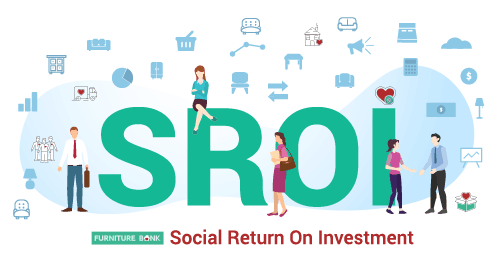Furniture Bank’s skills training and employment program (Leg Up) seeks to give at-risk youth and newcomers to Canada the working skills and experience to empower them to positively change their lives. Through the Leg Up program participants receive on-job skills training in customer service and logistics working in the Furniture Bank warehouse, call centre or client services department.
The Program offers five pillars of service:
1. On the job training
2. Employability skills coaching
3. Building civic responsibility
4. Building social assets and linking to support
5. Facilitating job placement
Paul Farrar leads the Leg Up program for our team as our Director of Operations. Paul recently was interviewed about where the Leg Up program is at, where it’s heading and why the program has become a benchmark for similar training endeavors across the GTA.
One of your key roles as Furniture Bank’s Director of Operations is leading the Leg Up program. Prior to your arrival to our team in early 2013, what was some of your past experience in skills training and employment?
I have a past history of starting up employment programs for clients who have barriers to the workforce. That came through funding through Human Resources Development Canada back in 1999 and that program is still going today. I’ve held some advisory roles with HRDC, both through a youth mentoring capacity and a general advisory position with the organization.
What kind of individuals do you generally have enrolling in the Leg Up program?
We have refugees and immigrants who have status that enables them to work in Canada. This means they have, at very least, a temporary social insurance number which means they are legally eligible to work or be trained. We also have some at-risk youth and some individuals who are formerly homeless or displaced. In general, participants in the Leg Up program very much reflect the type of clients we redistribute furniture to
What are some of your more recent success stories?
Just recently, we’ve had two participants that we’ve been able to hire full-time. One is becoming a donor associate and the other, a warehouse associate that we were able to graduate into a full-time position. He’s been training as a driver assistant and he’s definitely somebody that we could see moving to a full-time driver position eventually. And in a lot of cases, people who received training by Furniture Bank are able to progress in their roles. We actually have a past trainee who moved up the chain with us and is now our finance manager. She’s been going to school as well to get her degree so she’s been able to combine the training with additional schooling into a key role within our organization.
Where do you see the program heading in the immediate future?
From our standpoint, we want Leg Up to be in a constant growth stage. If you look at 2013 alone, there were roughly 16 participants that went through the program. One of the main focus areas for us is “next steps” for participants once they’re done their training and they’re ready to move on. You’ll find that a lot of people who move through the program want to stay with it–it’s a testament to the work environment we have and the service we provide. There’s a real family atmosphere at Furniture Bank but it’s hard because we can’t hire everybody that passes through the program, as much as we’d like to.
What steps do you and your team to seek out new employment opportunities for program graduates?
I’m always looking for job opportunities with partners, whether it’s with moving companies we’ve worked with or manufacturers. We look at building partnerships where we can arrange interviews for our participants once their time is done with us and give them a hand over-and-above the training they receive during the program. Currently, we have about eight potential employers interested in speaking to Leg Up recruits with a mix of call centre, warehouse, driver’s helpers and driving positions. That’s actually another focus at the moment–trying to expand the types of roles we can train for.
What are some of these other types of training you’re hoping to offer participants in the future?
Most definitely. Getting trainees in our workshop is a big goal for 2015 and beyond. We want to be able to get people in the program training in both carpentry and reupholstery. Our ideal is eventually making connections with some unions where we could help land participants eventually in apprenticeship programs. And further down the road still, I’d love to look at the workshop itself as being a viable standalone social entreprise–something where we could go out to the public and offer reupholstery and other services.
Tell us about Furniture Bank’s recycling efforts and the type of advances you’ve been able to make there.
Our recycling program was formalized about a year ago–we’d also recycled broadly and we just made it a specific program recently. With some of the beds and chesterfields that we can’t use, we recycle the metal and both keep waste from the landfill while making a little revenue on the side. We’ve used a similar approach with electronics through the Ontario Electronic Stewardship (OES) program. There’s also a cloth and hard goods program that gives us more recycling options. In the first year alone, we’ve diverted over 100,000 pounds of waste. It’s huge number and the fact there’s even a little income for our efforts is a bonus.
In closing, what role do your referring agencies have in the program and finding suitable candidates in need to enroll?
The number of agency that are referring us participants is growing and each week, we’re hearing from new agencies who want to learn more about opportunities. We have meetings coming up with the City of Toronto about a similar program they have. Word is definitely getting out there and the fact that we’re able to give some participants full-time roles after shows we’re doing a good job training people and giving them skills they can use






